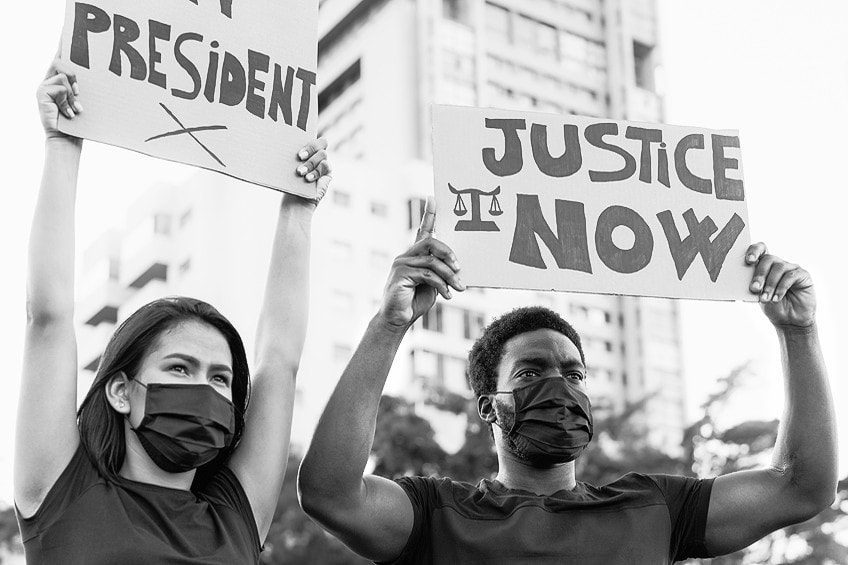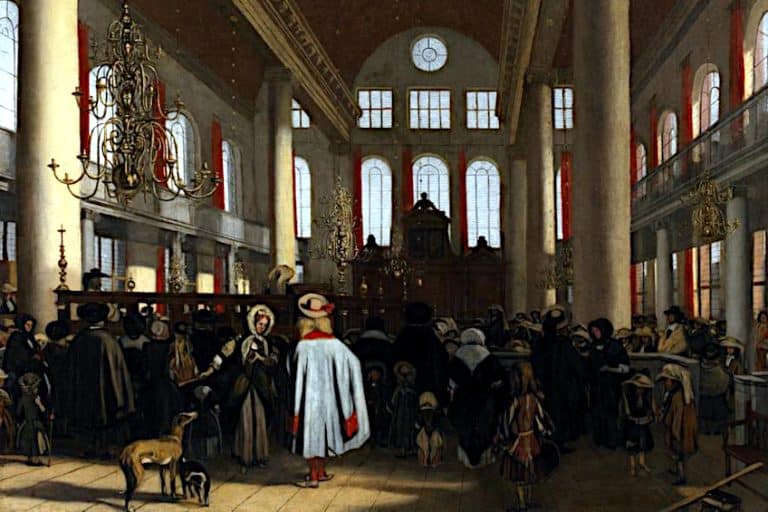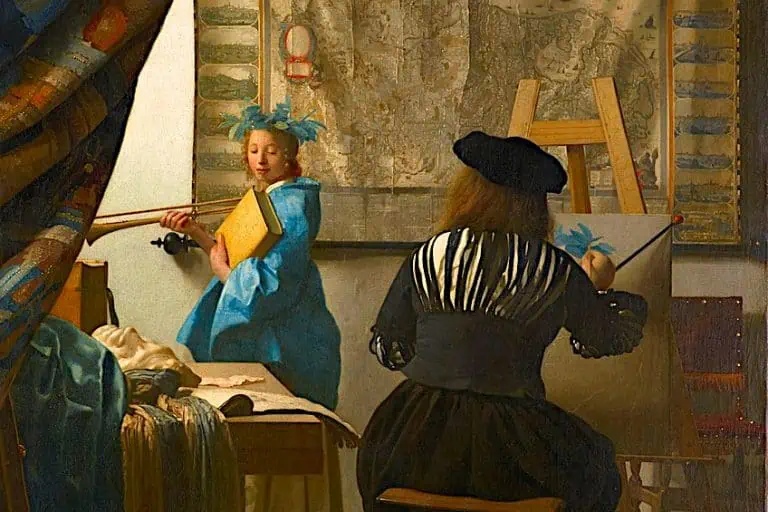What Is Slam Poetry? – Discover Rhythmic Rebellion
This post may contain affiliate links. We may earn a small commission from purchases made through them, at no additional cost to you.
What is slam poetry, and what is a poetry slam? These questions, and more, will be answered in the article below because this performative style of poetry is one of the more fascinating types of poetry to appear over the last few decades. Today, we will examine slam poetry, what it is, its history, how to engage with it, and various other aspects of this relatively young type of poetry. Let’s have a look at slam poetry!
Table of Contents
- 1 What Is Slam Poetry?
- 2 Frequently Asked Questions
- 2.1 What Is Slam Poetry?
- 2.2 Where Did Slam Poetry Originate?
- 2.3 Does Slam Poetry Have to Rhyme?
- 2.4 What Is the Difference Between Slam Poetry and Traditional Poetry?
- 2.5 How Do I Find Slam Poetry Events in My Area?
- 2.6 Can Anyone Perform Slam Poetry?
- 2.7 Is Slam Poetry Only for Young People?
- 2.8 How Has Slam Poetry Evolved Over Time?
What Is Slam Poetry?
To understand slam poetry, one first needs to know and understand what a poetry slam is. A poetry slam is a specific type of competitive poetry event in which those who perform their poems do so in a spoken word environment in front of a live audience as well as a number of judges. The idea is that these poetry slams are a means of incorporating an audience, and general audience participation, into the poetry itself.
So, then, what is a slam poem? A slam poem is simply a poem that is performed at a poetry slam.
The term “slam” is also sometimes used as a shortened term for this kind of live poetry. For those who are familiar with aspects of hip-hop culture, such as rap battles, this may seem somewhat familiar, and there are some strong influences from general urban culture in slam poetry. This competitive form of poetry only started in the mid-1980s as an attempt to push back against the overly academic tone that was set by the vast majority of poetry recitals and analyses.
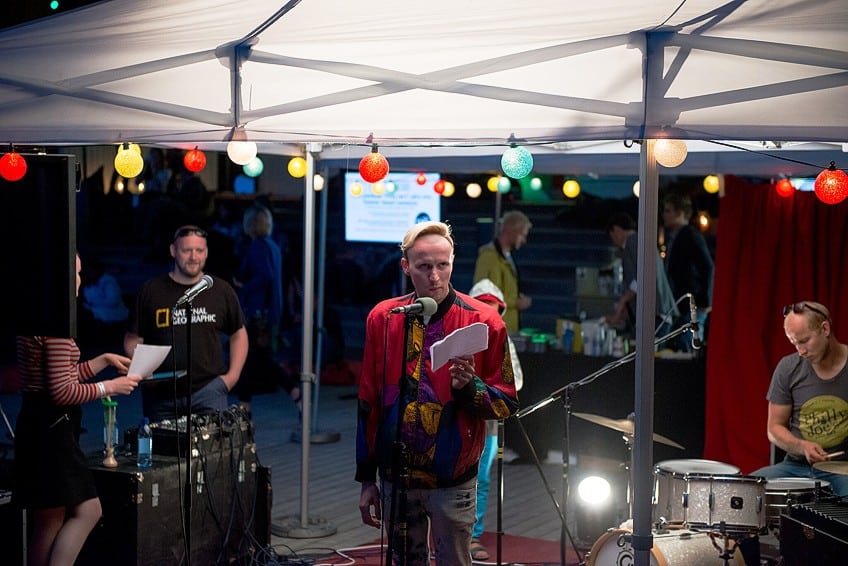 Example of a poetry slam in Paide, Estonia; Tauno Tõhk, CC BY-SA 4.0, via Wikimedia Commons
Example of a poetry slam in Paide, Estonia; Tauno Tõhk, CC BY-SA 4.0, via Wikimedia Commons
In this particular sense, it was a move towards incorporating the audience and a more enthusiastic participation from the poets themselves. The addition of the competitive element, in which poets or teams of poets, go up against one another, only adds to the enthusiastic approach of the style. Furthermore, those who engage in poetry slams are often from more diverse backgrounds, and so the form that poems take and the ways in which they are structured can be incredibly diverse.
The way in which poets are judged by the audience and/or a series of judges (which are sometimes simply selected from the audience) only adds to that enthusiastic nature of the whole affair. But what is slam poetry’s origin?
The Origin and History of Slam Poetry
Poetry itself has an immensely long history, and while some of its origins lay in a more musical direction, with genres of poems such as ballads often being accompanied by music, the general tone of poetry shifted. While poetry may have begun as a performative means of recitation for entertainment, religious, or cultural purposes, the medium started to shift into something else.
Poetry became more and more the domain of an academic mentality, and this can especially be seen in the 20th-century push towards highly complex modern poetry that would often vehemently stand against being easily understood by anyone other than those trained in poetry.
Poems like those of T.S. Eliot are perfect examples of this mentality. They often require a degree in literature to parse them at all. This is why Marc Smith saw some potential in a new means of interacting with poetry in general. This American poet was critical of what poetry had become, and after attending regular poetry recitals, which are often immensely somber and respectful events, he wanted to push for something different. This is why he organized the first poetry slam in 1984 in Chicago. The first location of a poetry slam was in the Get Me High Lounge in the city, and it would go on to be a success.
 The Nuyorican Poets Cafe building has become a forum for poetry; David Shankbone, CC BY-SA 3.0, via Wikimedia Commons
The Nuyorican Poets Cafe building has become a forum for poetry; David Shankbone, CC BY-SA 3.0, via Wikimedia Commons
The success of the initial attempt at something new in the field of poetry led to the move of that original poetry slam competition to a more permanent home in the Green Mill Jazz Club in 1986. However, this was only the beginning. The Ann Arbor Poetry Slam was founded in 1987, the first New York City event in 1988, the first in San Francisco was in 1990, and so on. The poetry slam had officially started to spread across the country and later throughout the world.
The eventual touring nature of poetry slams led to their increased popularity and the renewed interest in something that was often seen as overly formal, poetry, had become something that could be enjoyed in a performative sense.
Some of those slam poets who started out in those early poetry slams would go on to make full-time careers out of their performance-oriented poetry. The national recognition for slam poetry in the United States continued through the National Poetry Slam competitions that were held every year from 1990. In 1999, the competition was picked up by several major media enterprises, such as the New York Times. These competitions also started with very few teams, as the first only included three, but by 2018, there were 72 competing teams in this National Poetry Slam event.
 An early Chinese poetics, the Kǒngzǐ Shīlùn (孔子詩論), discussing the Shijing (Classic of Poetry); Shanghai Museum, Public domain, via Wikimedia Commons
An early Chinese poetics, the Kǒngzǐ Shīlùn (孔子詩論), discussing the Shijing (Classic of Poetry); Shanghai Museum, Public domain, via Wikimedia Commons
Today, there are many different poetry slam competitions throughout the world, and they are continuing to grow. Some of the reasons that many have taken to slam poetry around the world could be for any number of reasons. The inherent competitiveness and enthusiasm of slam poetry is certainly one of the major draws, but there are other reasons that many have been pulled into this scene.
The fundamental diversity of the poetry slams, the interactivity between poets and the audience, the self-expressive and artistic aspects, and the way in which anyone can participate have become important and influential aspects of slam poetry in general.
But what about the actual topics and structures that slam poetry promotes?
The Art of Slam Poetry
The earliest poetry slams would allow anyone to take part and be judged by the audience, and it eventually started to grow into something far larger. However, the way in which slam poetry would allow anyone to participate contributed to the kinds of poetry that would often be on display. In addition, the artistry of slam poetry was often informed by the competitive nature of the form.
The term “slam” explains the general atmosphere around which this kind of poetry is based, and that is because the audience is allowed to praise or slam any works that are performed in front of them.
The performative aspect means that there is pressure on the poets to appeal to what the audience wants to hear, and if they do not get what they want, then they could effectively destroy a poem through their reactions to it. For this reason, slam poetry is not for the types of people against which it was designed. As the earliest poetry slams were organized as a way of moving against the idea of stuffy poetry recitals and academic analyses, the kind of people who prefer those more respectful forms of poetry would be more likely to steer clear of poetry slams in general. This only aided in facilitating a different way of approaching slam poetry structures and topics.
One of the major elements of slam poetry is that it is less about the poetry itself and more about the performance of it all. For this reason, slam poets are expected to make full use of their bodies and voices to create something powerful and meaningful. For this reason, much of slam poetry is geared towards certain topics, topics that are more likely to be emotionally resonant. The kinds of topics that one may hear are often immensely personal or act as a means of social commentary and/or critique. And because of the kind of audiences that have been fostered through the decades-long tradition of slam poetry, the kinds of poets have been diverse, from a range of different ages, ethnicities, educations, genders, sexualities, and so on.
Because of this diversity of poets, there is also a diversity of topics that can be explored, and this can allow poets to weave their artistry into topics that they consider to be important.
However, there are certain rules and limitations that come with poetry slams. Slam poetry does not incorporate music, although musical elements can be added by poets and poet teams, such as singing or beatboxing. In addition, poetry slams impose time limits that can lead to a reduction of points if poets exceed those limits, and this adds to the pressure that poets feel when on stage. There are not necessarily rules in the traditional sense as to what kind of poems can be performed, but as there is an audience-participatory angle to slam poetry, it is often best for poets to engage in certain techniques.
 Lewis Carroll, an English author, poet, and mathematician; Lewis Carroll, Public domain, via Wikimedia Commons
Lewis Carroll, an English author, poet, and mathematician; Lewis Carroll, Public domain, via Wikimedia Commons
The use of rhythm and rhyme, metaphorical language, wordplay, and alliterative or assonance-filled verses can often contribute to the way in which a poem is received, and so these kinds of elements are also often accentuated. One does not expect a slam poet to be dry or slow, and it is instead expected of them to be confident, performative, enthusiastic, and passionate about what they are talking about. One cannot win over an audience if one does not imbue passion into one’s work.
For this reason, slam poetry serves as a challenge to poets, and a means of entertainment and inspiration for all involved, but how does one go about writing slam poetry in the first place?
Writing Slam Poetry
The writing and performance of slam poetry are often very different things from one another and require different skills. While the focus is predominantly on the performance aspect, and a slam poet needs to be able to engage with an audience, and so dry and monotonous deliveries are a surefire way to get one booed off a stage, the actual writing of slam poetry is still an important one.
In general, if one were to attempt to write slam poetry, it can often be best to be familiar with poetry in general.
Understanding how to write a poem, regardless of its place in or outside of poetry slams, can be beneficial. Understanding the ways in which language can be altered and bent to suit certain purposes is a helpful way of getting to grips with what may be expected of someone who decides to take part in a poetry slam. One of the most important things to keep in mind is that slam poetry is meant to be performed.

There are many highly fascinating and powerful pieces of poetry that make use of elements such as typography and text-based wordplay. However, if the cleverness of a poem requires it to be read rather than performed, it will not work as slam poetry. Slam poetry has to jump out to the audience, and so vocal and verbal elements are the most important thing to keep in mind. Another very important thing and a necessary starting point is to have a topic of some kind. If you decide to take part in slam poetry, then you need to choose a topic that you are passionate about, because if you are talking about something that you don’t know much about, the audience will see that. If the audience sees your lack of interest in something, they will not respond to it.
This goes for all examples of literature, but if you want to write something that resonates, you need to consume pieces of literature that resonate with you.
If you watch a movie or read a book and a part makes you cry or feel something, try to identify what made you feel that way. You too can make use of the techniques that are used in other mediums. So, once you have your topic, you need to come up with a first draft that goes into that specific topic in detail. It can often be easiest to make some of the first drafts more like a mini-essay. The editing process is where it can be smoothed over and made into something far more worthy of slam poetry.
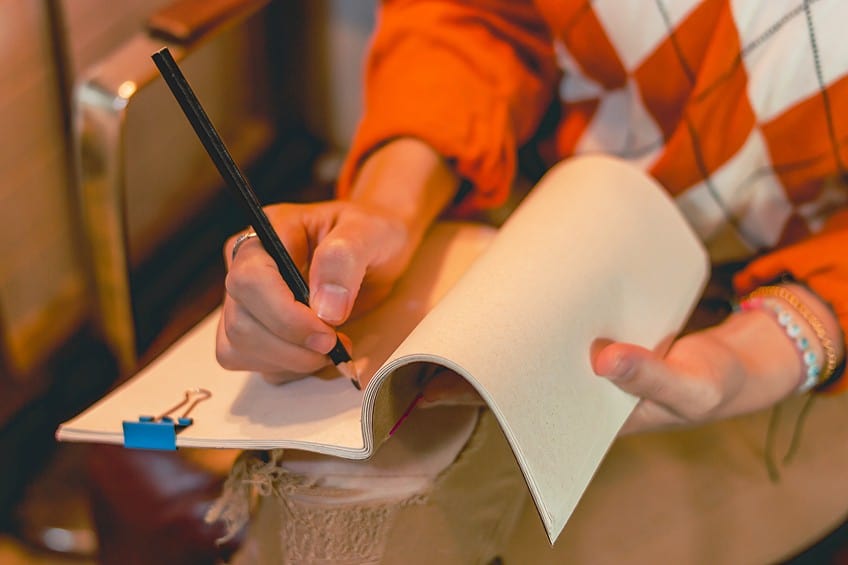
Once you know what your topic is and how exactly you want to present it, work on the poem to give it rhythm and other poetic elements. Metaphors and alliteration, rhyme and wordplay, and any other poetic techniques can be used. If you are not familiar with these techniques, there are endless online resources that can give you comprehensive lists of language techniques. Even elements of conversation can be used, such as list of three structures and rhetorical questions. But does slam poetry have to rhyme? Not necessarily, it can make use of whatever techniques you want to use.
However, it is important that you read your work aloud. It can be easy to stumble over lines, especially when they increase in complexity, and you need to make sure that you are able to recite these poems because otherwise, they will not work as slam poems. What is a slam poem if not a performance?
That isn’t everything though. If it sounds good, that’s great, but it also needs to be performed well. Anyone can read a well-written poem, but not anyone can make it a performance. You need to practice. You need to make use of your body. You cannot be stiff on stage. You need to find ways of incorporating dramatic and/or conversational elements.
Think of talking to someone. There are people who are gifted at telling their anecdotes in ways that entertain, and then there are people who monotonously droll away at you and make you wish you’d never left your house. Do not be the latter. Have energy. Increase and decrease the volume of what you say, use pauses and exaggerations, emphasize what should be emphasized, and use body language. A stiff person does not a good performer make.
In addition, it can be beneficial to keep certain topics in mind. No one, unless you’re able to make it meaningful, wants to hear about your trip to the grocery store.
They want to hear about the intimate details of your life and your thoughts, they want to hear your anger and passion about the issues in the world, they want to hear about love and hate, and they want to be entertained. The slam poetry community also, generally, tends to skew towards certain political ideologies over others.
The Slam Poetry Community
Thanks to the inherent format of poetry slams as audience participatory events, there is a fundamental community-oriented component to slam poetry. The audience takes a direct part in the process and exhibits their interest or lack of it during every performance. No performance will ever receive no response whatsoever, because a silent response is actually a response that speaks volumes.
In addition to this, as anyone can sign up to take part in a poetry slam, the stage is open to all who want to try and perform on it.
This means that the audience and the performers are often one and the same, and there is a respect between them. Many smaller poetry slams are also far more intimate, and even if a particular performance is not received all that well, the poet will still likely be welcomed by the community (unless they engage in certain topics).

This is why it may also be beneficial to mention Marc Smith, the founder of slam poetry. In 2017, he was invited to perform at a poetry slam as an honorary guest, but his performance was not well-received. Smith is an older man by this point, having started the first poetry slam in the mid-1980s, and his chosen performance was considered to be distasteful (to choose a more pleasant term). Poetry slams have become places for typically left-leaning communities, and when performances are seemingly against certain people who would be in those audiences, said audience does not usually respond well. So, even the founder of slam poetry is not immune to the ire of an angry audience.
This does also mean that for those who are part of the community, it is a safe space.
As the topics that are often explored do lean towards the left side of the political spectrum, it makes sense that these events would become bastions for those who identify along those lines. This helps to establish the community as something that is accepting of certain groups over others, and those who are accepted can build a strong community within it.

And if you too are interested in having a look at a few poetry slams in your area, they may just be around. The problem is that every place around the world is different, and you will need to look into things yourself. Some of the easiest ways to find poetry slams in your area are to see if there are any on social media that are in your city/country, and a quick Google search with the words “poetry slam” and your city should yield some results.
However, many places will not have poetry slams, but the good thing is that a poetry slam is not a copyrighted thing. You can set up your own.
No one can stop you! So, if you want to try your own hand at establishing a poetry slam community of your own, you can easily do so by posting about it and starting it up. The spirit of the poetry slam is that anyone can participate, so why not facilitate for others to participate?
Slam Poetry and Social Justice
Slam poetry has a lengthy connection to social justice movements because of its inclusive nature. The idea that anyone can participate and allow their voice to be heard means that topics that may otherwise be out of reach of certain people can be made front and center for all to see and hear. The performance aspect of slam poetry also contributes to this because when someone wants to express their anger and/or frustration about a particular topic or area of their life, they can do so with passion.
It is not uncommon for many slam poets to use their time in the spotlight to challenge all manner of dark aspects in our world, such as oppression, discrimination, and injustice.
In addition, as these spaces tend to be more left-leaning on the political spectrum, they can often be places that promote education, awareness, and empowerment. This is the perfect nesting ground for political action to take place. There have been many slam poets who have used their time on the stage to give a voice to these issues, such as poems like Dear Straight People by Denice Frohman (which addresses heteronormativity) or Lost Voices by Darius Simpson and Scout Bostley (which explores race and gender from an intersectional perspective).
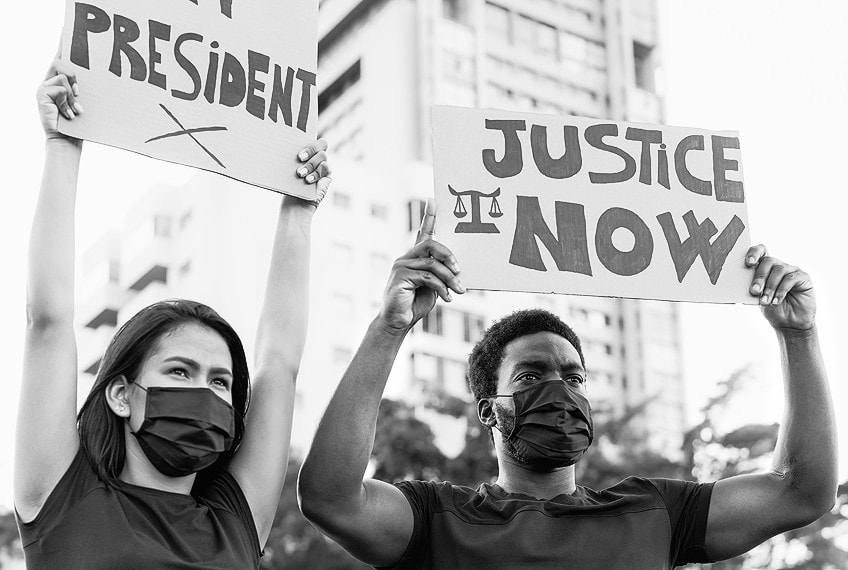
There are a lot of spaces within the slam poetry community for those who wish to take part in social justice activism, and the medium can serve as a means of encouraging others to never give up on these political causes. What is also clear is that slam poetry and the poetry slam are not going anywhere anytime soon.
The Future of Slam Poetry
Slam poetry has been in existence for several decades at the time of writing, but the era of slam poetry is far from its end. Throughout the 21st century, the medium and the events have become increasingly diverse and there has been an increased level of participation from women, people of color, LGBTQIA+ people, indigenous individuals, and various other marginalized groups.
This diversification has also been aided by the technology that is now available to us.
In the past, one needed to go to a club and participate in one of these events, but today, they can be recorded and uploaded to the internet. There is even a newer trend to slam-style poetry being directly uploaded without actually being recorded at a poetry slam. The confrontational style has become a thing on its own.
The use of streaming has allowed for poetry slams to reach places that they had never been able to reach in the past, and they are no longer lost to the wind as part of the oral tradition. They are saved and preserved for posterity, or at least that is now an option that is available to someone. When poetry slams started in the 1980s, recording something was an expensive feat. Today, we all have phones with cameras far superior to any camcorder from the 1980s.
Slam poetry has also become something of a genre of its own, and there are courses and think pieces about it across the internet.
Poetry slams, which were created to be a response to the more academic high-mindedness of poetry recitals of old, have now become a topic that is explored from the very academic perspective it may have once sought to distance itself from. The way in which slam poetry can be used as a means of promoting disparate cultures, calling injustices to attention, and advocating for social change has made it one of the most resilient contemporary forms of poetic performance. The age of the poetry slam is not at an end, and there is presently no end in sight for it either.

We have arrived at the end of our journey into the world of slam poetry and poetry slams. Hopefully, you have enjoyed this brief foray into this competitive world in which we answered the overarching question: “What is slam poetry?”. In addition to this, we examined slam poetry structures, its history, some of the topics that it explores, and why it exists in the first place. Now, all that’s left for you, if you enjoyed this, is to attend a poetry slam if you get the chance. Best to see it up close and personal, after all.
Frequently Asked Questions
What Is Slam Poetry?
Slam poetry refers to any kind of poetry that is performed at a poetry slam event. A poetry slam is a competitive event in which different poets or teams of poets compete against one another for an audience’s and/or a panel of judges’ approval. Slam poetry is marked by its performative elements, its enthusiasm, and the more social commentary or personal topics that it explores.
Where Did Slam Poetry Originate?
Slam poetry has its origins in the mid-1980s when Marc Smith, a Chicago-based poet, decided to start up the first poetry slam in response to the more academic and subdued way in which poetry is generally performed in recitals. The poetry slam quickly spread around the United States and then the world.
Does Slam Poetry Have to Rhyme?
Slam poetry does not have to rhyme. However, as slam poetry is a performance-oriented form of poetry, making use of poetic techniques such as rhyme can be beneficial. Other poetic techniques, such as alliteration, rhythm, and simile, are equally as viable. None of them need to be used, but any of them can be used. Audiences tend to respond to fun-sounding language more than dry language, though.
What Is the Difference Between Slam Poetry and Traditional Poetry?
Slam poetry is a fundamentally performance-oriented style of poetry that is structured around audience participation and response. This also means that it is often passionate and invigorated. Traditional poetry, on the other hand, is generally more tailored towards an academic use of language and expression. However, more traditional poetry can also be passionate and even performative, but the difference is that slam poetry is built around aggressive performance, while traditional poetry is not.
How Do I Find Slam Poetry Events in My Area?
This really depends on where you are in the world. The easiest way to find any kind of slam poetry event is to use social media and search engines. Many poetry slams are smaller events around the world, and they tend to be associated with a certain kind of crowd, and so you may need to do some online sleuthing to find them in your area. However, if you can’t find any in your area, you could always organize one yourself!
Can Anyone Perform Slam Poetry?
Anyone can perform slam poetry at a poetry slam so long as they sign up and adhere to the rules of the particular slam. Slam poetry is built around an inclusive mentality that does not seek to exclude anyone from the artform. However, it is not advisable for just anyone to go on stage. Ensure that you’re prepared first, because the audiences at poetry slams have been trained to be more aggressive, and that can be nerve-wracking to those who are not used to it.
Is Slam Poetry Only for Young People?
Slam poetry is for anyone who wants to take part. While it may appear like a young person’s event, as it can be passionate, loud, and enthusiastic, anyone can participate. Thanks to its inherently inclusive nature, there are all sorts of people who take part in poetry slams. While young people may make up a large demographic, they are not the only ones there.
How Has Slam Poetry Evolved Over Time?
Slam poetry has evolved from a tiny movement in Chicago to a global movement. It is still certainly niche, as any literary event of this kind would be, but it has grown into something far larger than what it started as. In addition, slam poets have experimented with what they could do with the form over the decades, and some fascinating performances have come out of that experimentation.
In 2005, Charlene completed her wellness degrees in therapeutic aromatherapy and reflexology at the International School of Reflexology and Meridian Therapy. She worked for a company offering corporate wellness programs for several years before opening her own therapy practice. In 2015, she was asked by a digital marketer friend to join her company as a content creator, and it was here that she discovered her enthusiasm for writing. Since entering the world of content creation, she has gained a lot of experience over the years writing about various topics such as beauty, health, wellness, travel, crafting, and much more. Due to various circumstances, she had to give up her therapy practice and now works as a freelance writer. Since she is a very creative person and as a balance to writing likes to be active in various areas of art and crafts, the activity at acrylgiessen.com is perfect for her to contribute their knowledge and experience in various creative topics.
Learn more about Charlene Lewis and about us.
